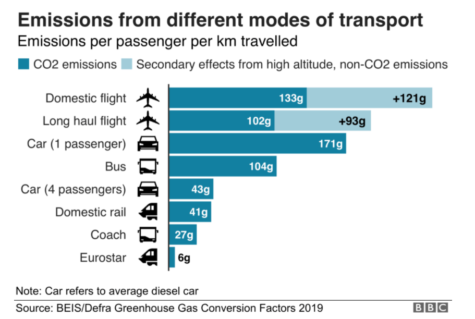Eco What ?
December 7, 2021

In the past 50 years, the amount of people traveling has erupted immensely, along with people taking longer vacations, going to destinations further away, and more people visiting the same locations without respecting the area. Because of this, tourism now accounts for 8% of all greenhouse gasses, making ecotourism an important issue.
Most people do not know what ecotourism means, never the less heard of it. Ecotourists’ definition is “responsible travel to natural areas that conserves the environment, sustains the well-being of the local people, and involves interpretation and education” (TIES, 2015). A simple way to explain it would be that, while traveling you are being eco friendly and giving back to the community in which you have visited. Unfortunately, the second part of the definition is often left out. They think ecotourism is only about the earth, but it’s about benefiting the community as well.
The first part of ecotourism involves your carbon footprint. While taking an airplane releases loads of carbon dioxide, taking a boat averages an even greater amount. When flying is the only option, buy carbon offsets. Carbon offsets are purchased through certain companies, and for example, they will plant a certain amount of trees depending on how much you paid. Though there are other options, like using sustainable airports and airlines that have more sustainable jet fuel, like British Airways! Along that path, fly economy, when you fly business you just take up space and cause more flights to be flown. Canceling a single 2,500 mile flight keeps 32 square feet of arctic ice from being melted. So if you don’t need to fly over oceans, try to take a car (electric cars are the best), or public transportation.
Next, look for the hotels or eco-lodges. These stays typically use use solar power, local products, biodegradable keycards, mobile check, collect rainwater and have LEED certification (Leadership in Energy and Environmental Design). Camping and staying in hostels are also great options, and less expensive too. While staying at these places try to reuse towels, bring both reusable water bottles and reusable straws, and don’t ask for room service.
While traveling, one of my favorite sayings to remember is ‘leave only footprints’, pick up after yourself, and leave the wildlife alone; ‘take only pictures’. Trying to get close to the wildlife can stress them and affect the environment. In addition, since most people go places where they can swim in the ocean, sunscreen is an essential. Sadly, most sunscreen is lethal to coral reefs, which is one of the many reasons why our coral reefs are deteriorating so quickly; make sure you get sunscreen that is ocean/reef safe.
Now we have the first part of ecotourism covered, let’s move onto the second half. The first suggestion would be to travel for community service, which involves you traveling out somewhere to specifically help the community (volunteer abroad). Adding onto that, while abroad we want to support the local vendors by buying from them. Although try to keep a balance between the two since too much consumerism is bad for the planet. Another big factor to take into account is when you are traveling. Are you traveling during this community’s busy season? It is recommended that you travel during the off season so you help the community stay afloat all year; plus, it is cheaper.
Out of the two people I interviewed, only 1 had heard of and knew the definition of ecotourism. Mr. Mabott, who knew the definition of ecotourism, has actually traveled as an ecotourist before. He admitted he has done long drives with only a couple people in the car but when his family and him travel they don’t leave any trash and try to shop and stay locally. When asked what he thinks are the easiest parts of being an ecotourist, Mr. Mabott said that, “Especially in underdeveloped countries, it’s easier in some ways because a lot of the infrastructure; they don’t have like big chain supermarkets or anything. You buy from local food stands that you see on the road and things like that and, the easiest part, I think some of it is just common sense, especially when you’re out and about, when you’re hiking, when you’re backpacking etc. Just, you know, don’t destroy stuff, don’t be an idiot. You know what I mean, and some of it is pretty basic.” When asked what the hardest part of being an ecotourist is, he thinks the hardest part is trying to get somewhere far away in a sustainable manner, because you have to fly. You don’t really have another option. Now even though my other interviewer, Isa, did not know of ecotourism before the interview, when I asked her if she would ever consider traveling as an ecotourist she responded ethsuithiastically with ”Ya I would, for sure. Like anything to help the planet I would. Like now with climate change, it’s really concerning,” and, ”even for the experience.” Part of ecotourism is the experience as Isa points out, it brings you closer to the community and creates more memories. But when asked what the hardest part of being an ecotourist would be, Isa said she thought it would be “adapting. Because we are just used to not being eco friendly, adapting to it would be really hard, but yes, it’s not impossible.” Isa is exactly right. Adapting is the hardest part of being an ecotourist, not the actual ecotourism part, so give it a try!

